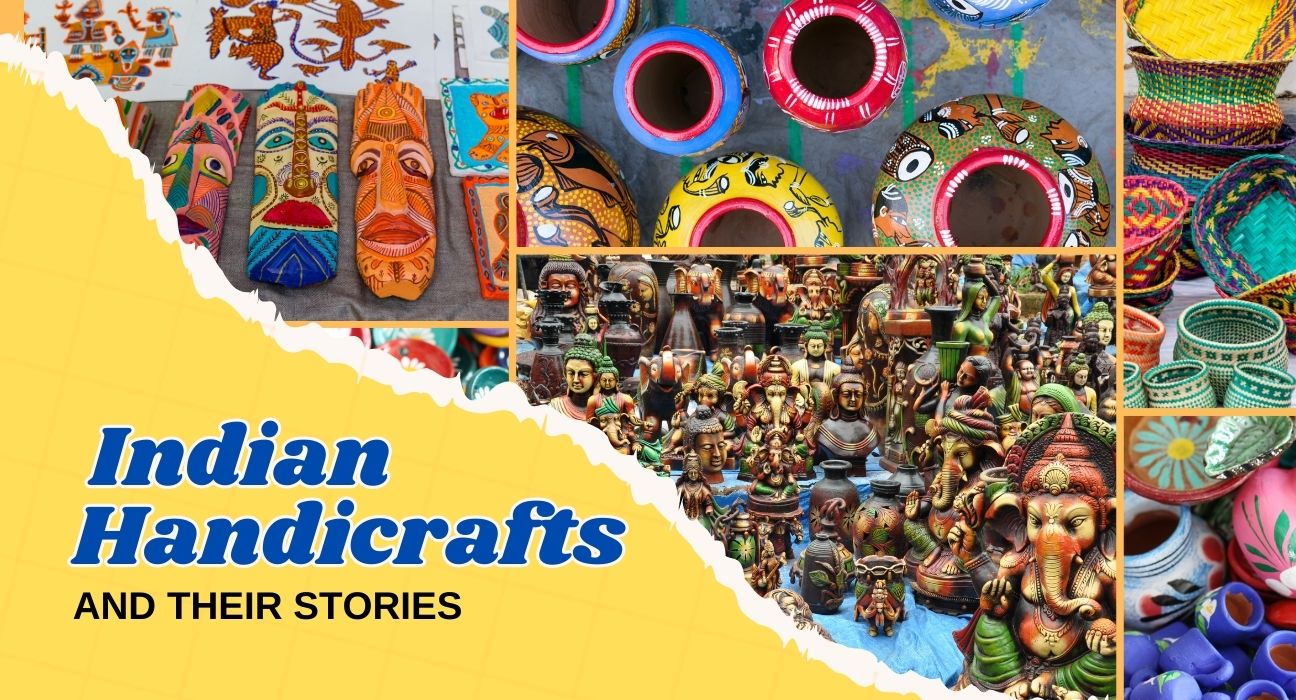India is a land of rich cultural heritage and diversity, reflected in its various forms of handicrafts. From intricate embroidery to exquisite pottery, India offers a wide array of handicrafts that showcase the skill and creativity of its artisans. In this article, we’ll explore some of the most prominent types of handicrafts in India that continue to captivate the world with their beauty and craftsmanship.
Embroidery is one of the most celebrated forms of Indian handicrafts. Each region of India boasts its own unique style of embroidery, such as Chikankari from Lucknow, Phulkari from Punjab, and Kantha from West Bengal. These exquisite embroideries often feature intricate patterns and vibrant colors, making them highly sought after in the global market.
Another prominent form of Indian handicraft is pottery. India has a long history of pottery making, with each region having its distinct style and technique. From the blue pottery of Jaipur to the terracotta pottery of West Bengal, Indian pottery reflects the cultural ethos and traditions of the region. The craftsmanship and artistry involved in creating these pottery pieces are truly commendable.
The art of weaving is deeply rooted in Indian culture, and the country is renowned for its diverse range of handwoven textiles. Whether it’s the timeless elegance of Banarasi silk sarees, the intricate patterns of Patola silk from Gujarat, or the colorful ikat weaves from Odisha and Telangana, Indian handwoven textiles are a testament to the skill and creativity of the weavers.
India is also known for its traditional jewelry making, with each region producing its unique style of jewelry. From the intricate Kundan jewelry of Rajasthan to the elegant temple jewelry of South India, Indian jewelry reflects the country’s rich cultural heritage and craftsmanship. The use of precious and semi-precious stones, along with intricate designs, makes Indian jewelry a favorite among jewelry enthusiasts worldwide.
Woodcraft is another significant category of Indian handicrafts, with skilled artisans creating a diverse range of wooden artifacts. From the ornate wood carvings of Rajasthan to the exquisite rosewood and sandalwood carvings of South India, Indian woodcraft showcases the artistic prowess of the craftsmen.
In addition to the aforementioned types of handicrafts, India is also known for its metalwork, leather craft, and terracotta art, each with its own distinct regional variations and techniques.
The significance of Indian handicrafts extends beyond their aesthetic appeal. These crafts also play a vital role in preserving traditional skills and providing livelihoods to numerous artisans across the country. Moreover, they contribute to the promotion of sustainable and eco-friendly practices, as many of these crafts involve the use of natural materials and traditional techniques.
In conclusion, Indian handicrafts are a treasure trove of artistry, heritage, and cultural significance. The diverse range of crafts, each with its unique story and style, continues to enchant people around the world. By supporting Indian handicrafts, we not only embrace timeless beauty but also contribute to the preservation of traditional craftsmanship for future generations to appreciate.








Leave feedback about this